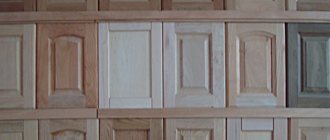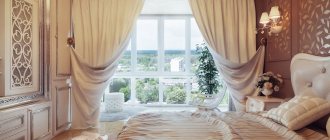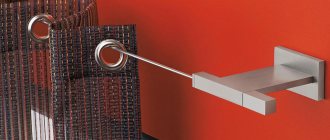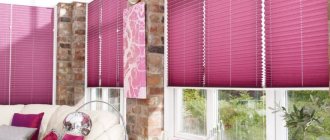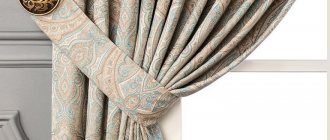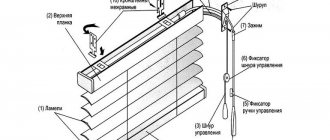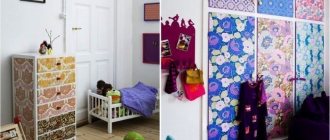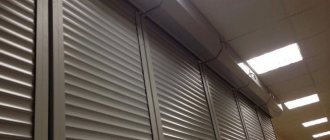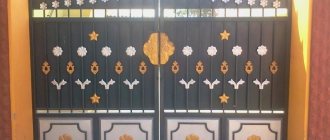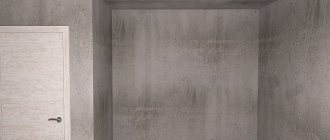Windows have long been decorated with tulle. Alone or in combination with curtains, it is the finishing touch in creating the intended interior of the room. The veil is the undisputed leader in sales on the tulle market. Light and delicate material has won the love of not only ordinary citizens seeking to decorate windows, but also leading designers in curtain fashion.
Features of voile curtains and description
Translated from French, “voile” means “veil, veil.” If earlier the veil was used for sewing stylish hats that hid women's faces, today it is used for sewing curtains and women's clothing.
This thin, mesh translucent fabric, produced using plain weave technology, has a matte surface without shimmer.
Its main difference from organza is its denser structure, due to which it retains and gently diffuses sunlight.
Types of curtains
Depending on the threads and fibers, the veil can be:
- cotton;
- silk;
- linen;
- synthetic;
- mixed.
Natural fabrics carry special energy. Linen, silk and wool are environmentally friendly, beautiful, but have a high price.
The most affordable is a polyester veil. It has an attractive appearance, softness and silkiness.
Not only rectangular and arched curtains are made from voile, but also French and Austrian ones. Both types are draped luxuriantly due to vertically sewn cords. The difference between them is that in the first case the flounces are located along the entire length of the canvas, and in the second - only along the lower edge.
How to care?
With proper care, microvoile curtains will last for many years.
The care of textile products is regulated by the fiber composition. It is indicated by the manufacturer on the label. When you buy not a finished item, but fabric, the seller must explain the rules for caring for it. The general rules are as follows:
- Washing is carried out in an automatic machine at a temperature not exceeding 40 degrees, in a delicate mode, using gentle detergents without bleaches.
- The veil wrinkles easily. It cannot be twisted. But thanks to its fine-mesh structure, even if not wrung out, it dries quickly.
- Dry away from bright sun and heating appliances. To avoid creases, wet items are hung on a ledge after washing.
- Products are ironed completely dry. The temperature is set to approximately 110 °C. The canvases are sprayed with water from a spray bottle.
- The slightly warm item after ironing is hung on hangers, the curtains are hung again on the curtain rod, then they are allowed to cool completely.
Voile curtains should not be vacuumed or steamed. You risk damaging the fabric structure, it will lose its attractive appearance and may even tear.
A delicate, airy, elegant veil is used to make elegant clothes, wedding dresses, curtains, and canopies. Voile curtains are sold in many online stores. They are perfectly combined with curtains, fit perfectly into a residential environment, and are suitable for decorating cafes and restaurants. The veil will decorate the interior and correct natural lighting. A wide range of colors will give room for creativity.
Advantages and disadvantages
The advantages of the veil include:
- wide selection of colors;
- soft structure that allows you to create various draperies;
- lightness and airiness of products;
- hygroscopicity and breathability;
- moderate sun protection.
Flaws:
- gets dirty quickly;
- fades in the sun;
- has low strength;
- forms creases and is electrified (the statement applies to synthetic fabrics);
- Cotton and linen fabrics shrink up to 5% when washed;
- Complex stains are difficult to remove.
New in the world of tulle is micro-veil, which embodies the positive characteristics of veil and organza. It holds its shape well, does not fade and allows sunlight to pass through.
Functions of curtain weights
A special weighting device ensures the much-desired evenness of the lines. Japanese, Roman, and Hungarian curtains and drapes made from heavy fabrics are especially susceptible to deformation and do not hold the desired shape without additional load. In order not to be puzzled by the issue of purchasing a finished product, you can make weighting material for curtains with your own hands, getting an effective result in the shortest possible time with minimal investment.
You can make a weighting agent from available items (ribbon, cord, metal parts, slats are suitable). In each specific case, the choice of weighting material is determined by the properties of the fabric. Cord and ribbon are used if the main material of the curtains is tulle, organza or other light fabrics. The remaining options are relevant if the window opening is decorated using heavy materials.
It should be noted that the cords and weights are especially convenient, which can be easily removed before washing or cleaning the curtains.
Sizes and colors
The length of voile curtains can be slightly higher/lower than the window sill, on the floor, not reaching it by 5-8 cm, or exceeding the height of the room. In the latter case, the bottom of the curtains is draped on the floor.
Short tulle is appropriate in the kitchen. Products that do not touch the floor get dirty less and make it easy to wet clean underneath them. A floor-length veil looks more elegant and stylish.
Cornices are mounted on the wall above the window or on the ceiling.
Not so long ago, a refreshing white color was considered traditional for tulle. Today preference is given to pastel colors - milky, peach, light green, lavender, pink.
A rainbow veil combines several fabrics made in different colors and sets the mood for positivity, while tulle with an ombre effect differs from other multi-color curtains in its smooth transition of shades, which brings unusualness and sophistication to the interior.
Drawings and patterns
The choice of voile tulle is extensive, so it’s not difficult to find curtains to suit your own taste. Drawings and ornaments, embossing and embroidered elements, patterns and stripes - any of the listed decorative elements finds its place in interiors (pictured below).
Kitchen windows are decorated with flowers and monograms, embroidery is appropriate in the bedroom and living room, and an elegant stripe will complement the business atmosphere of the office.
A new direction in window design is the use of photo curtains. The themes of the drawings are different, which allows you to use tulle in different rooms. Still lifes are appropriate in the kitchen, scenes from cartoons are appropriate in the nursery, and imitation of luxurious embroidery or natural and city landscapes are chosen for the living room. Images on tulle can have clear outlines or be blurry and ghostly.
Tulle from a veil in the interior of rooms
A veil on the windows always looks stylish and elegant. It fits well into both the romantic design of the bedroom and the elegant interior of the living room.
Transparent tulle with vertical stripes visually lifts the ceiling and makes the room taller. And horizontal stripes are appropriate in narrow and small spaces.
The color of the tulle is chosen depending on the design of the room. For example:
- In a room decorated in Baroque style, a golden veil is hung on the windows.
- For high-tech use light gray tulle.
- The presence of lilac curtains will complement the atmosphere of Provence.
- Geometric shapes are welcome in Art Nouveau.
- For classics, choose light tulle. It is gracefully draped, fastened with clips, tiebacks and lambrequins.
- In a rustic design, tulle with lush folds is appropriate.
- A simple cut veil, made in cool light shades, is used in a minimalist style.
- For country and shabby chic, choose white or creamy fabrics with a printed floral pattern.
- In ultra-modern designs, it is allowed to use bright, rich colors. A deep blue, emerald green or bright red veil will decorate the interior and add piquancy to it.
Varieties
Before purchasing fabric for curtains, you need to know what types of tulle manufacturers offer. Only harmoniously selected material can successfully fit into the composition of the interior and give it completeness.
In addition to the organza and veil discussed above, these fabrics include:
- tulle;
- net;
- batiste;
- muslin.
In addition, each of these materials can be decorated in several ways:
- machine or hand embroidery;
- etching various patterns with chemical reagents;
- metallized coating;
- weaving lurex threads;
- printing ornaments or prints;
- decoration with sequins or rhinestones;
- laser perforation.
Chan-jean tulle fabrics, which change their shade from different angles, are popular. This is achieved by interweaving threads that differ slightly in color.
In addition, some fabrics are processed wet on special presses to obtain numerous creases, the so-called harvester fabric. There is also tulle crash with a pattern that imitates broken glass and many others.
Often light tulle fabrics, such as veil or muslin, are sold with a weighting agent. It is a tape into which metal plates or balls are sewn at equal distances. Weighting the fabrics ensures that the draperies laid during sewing do not diverge and the curtains retain their shape for a long time.
Criterias of choice
To make the right choice of tulle, you need to take into account several nuances regarding its color, shape and length.
Color creates a mood. Yellow and orange curtains fill the interior of the room with joy, green and blue curtains refresh and ennoble, and sand curtains add mystery to the atmosphere of the room.
Against the background of walls with patterned wallpaper, plain tulle will look better.
Dark tulle in a large living room will visually reduce the size of the room.
To dilute the boring interior environment, choose textiles in rich colors.
In the kitchen, the veil can match the color of the throw or countertop.
For large windows, choose floor-length tulle. If the windows are small and the ceilings are low, the cornice should be placed as close to the ceiling as possible, and its size should exceed the width of the window opening.
When creating a laconic design, straight tulle fabrics with eyelets are used. If the task is to fill the space with volume and luxury, use a double row of veil or tulle with a pleated effect.
For the kitchen, a veil treated with non-flammable impregnation is preferable. It will provide more security than simple tulle, and the choice of colors is quite wide.
For windows facing the sunny side, the best option would be a dark veil with a high density, and, conversely, light shades are suitable to replenish insolation.
An interesting option for window design is crossed canvases of different colors. At the top they lie on top of each other, and at the bottom they diverge.
Rules of care
Proper care of them will help preserve the original appearance of curtains for a long time.
It is recommended to wash the veil by hand using liquid detergents. You can use the delicate wash mode without spinning in an automatic machine. After drying, iron it through wet gauze.
Vacuuming voile curtains is not recommended. This can damage the structure of matter.
How to care for veil and organza
- Delicate wash at a water temperature of 30-40 degrees for a veil, and up to 45 for organza.
- Using universal powders for the first tulle, and oxygen bleaches for the other (in case of severe contamination).
- Iron veils and micro veils with a warm iron using a damp cloth.
- Dry cleaning of soft tulle is not recommended.
- Spinning organza in a washing machine can create creases that are difficult to remove when ironing.
Organza
Careful care of tulle curtains can delight you for a long time with your favorite decoration of window and doorways in rooms.
You might be interested in Features of using silk blankets, rugs and bedspreads
How to combine with other curtains
A few tips for correctly combining curtains:
- Fabrics should be combined not only in color, but also in structure. The best curtain combinations for a veil are with velor, cotton, linen, mesh and velvet.
- When using 2 types of tulle, choose colors of similar or contrasting shades. Combining warm and cold shades is not allowed.
- If the task is to highlight a window, the emphasis is on only 1 type of curtains. The rest act as a neutral background.
- The veil looks great with a lambrequin. A piece of thin fabric is gathered into small folds using curtain tape and placed on top of light tulle. This design is appropriate in Provence and country design.
- A fashionable technique in window decoration is a throw, when a strip of veil, draped in folds, is thrown over the cornice 2-3 times.
Cord, tape and wire as weighting for curtains
The weighting agent in a roller blind can be a plastic or wooden strip.
Weights of this kind are sewn along the bottom edge of the curtains. Cord is most often used when sewing light and thin fabrics. For example, tulle. Instead, an ordinary chain or piece of wire will do.
They are sewn on manually or by machine. In the second case, they are processed with an overlocker or a machine zigzag seam is performed.
The method of simply folding the bottom edge of the curtain and threading a chain through it is more aesthetically pleasing. However, this option is unacceptable for translucent materials.
The fabric of the curtain itself also makes the product heavier. Why the bottom or side of the canvas is folded twice by 10 cm.
Wooden slats, thin pins or metal tubes often act like a load instead of a tape. Often they are planned to be attached when making curtains yourself. In this case, slats are purchased at a building materials store or made from bars. A used cornice cut into pieces, a disassembled metal shelf from the hallway, and other objects can be used as a pin.
When the load is a slatted or wooden plank, the space for hemming the bottom pocket is left equal to the height of the plank and a couple more centimeters. For a metal pin, machine stitching is laid half a centimeter from it.
How to sew tulle from a veil yourself
Sewing tulle at home is easy. If you have no experience in sewing, you can settle on a simple model. The veil is so good that any curtains will look light and airy.
Master class on sewing tulle from a voile:
- Draw a sketch of the future curtain on paper.
- Measure the width of the window opening and the height from the eaves to the floor. Calculate the required amount of material and curtain tape. If volumetric folds are planned, the window width should be multiplied by 3. For a small assembly, the multiplier is 1.3-1.5.
- Buy a veil and tailor the future curtain.
- Fold and stitch the edges.
- Sew (or glue) a transparent curtain tape with loops to the top edge, departing 0.5 cm from the top edge.
- Gather the veil a little and hang it on the cornice using hooks.
Ready-made voile curtains can be purchased in a store or ordered from a studio according to your own sketch. In comparison with the proposed option, they will seem more refined and beautiful, but a thing sewn with your own hands makes the interior especially cozy.
Plain or multi-colored, with a small pattern or large print, the veil always looks stylish and elegant.
Types of weights
Most often, cords and plates are used to give curtains their shape. They are installed at the bottom of the curtain fabric, giving the curtains an ideal look. The cord is great for use on light and thin materials. You can purchase these elements in various weights in the store. Such a spread makes it easy to choose a cord that optimally matches a curtain of any texture.
If it is necessary to maintain the shape only at the corners of the curtain, special plates will be useful. Usually, mounting fasteners are sold complete with them, with the help of which the weighting agent is easily fixed in the lower hem of the fabric. These elements vary in weight, so they can be matched to almost any curtain.
If you want to make weights for curtains with your own hands, you can take thin steel pins from an old shelf, or narrow wooden slats. When hemming the bottom of the curtain, it is necessary to make an additional indent of at least 15-25 mm.
In specialized stores there are weights in the form of two types of weights: elongated conical shapes and round ones with holes. They are attached to the side folds of the curtains or using a special tape. Weights for Japanese curtains in the form of slats and slats come complete with fabric and fastenings. They can be purchased separately.
Previously, coins played the role of weighting agents. This idea can be adopted when designing modern curtains. Instead of coins, it is permissible to use other flat metal objects. Since these elements are not visible to others, any, even the most unpresentable things, can be used as cargo. To prevent them from spoiling the fabric, it is advisable to cover them with thin material before fastening them.
You may also be interested in: Ideas for using crystal curtains in the interior
Weights for Roman blinds are necessary for the correct operation of the lifting mechanism; they create sufficient tension for the cords when lifting. They take the form of steel plates, metal rods or slats.
with weighting material are made of waterproof materials. The weight is necessary for better fixation of the curtain during bathing, so that water from the shower does not fall on the floor. A metal chain or small balls or rods are sewn into the bottom fold of such a curtain. You can attach some magnets to the bottom of the shower curtain, which will allow you to securely fix it to the metal bathtub without allowing water to splash around.

